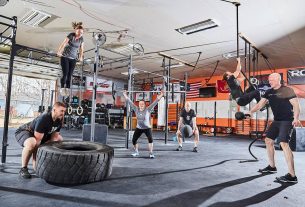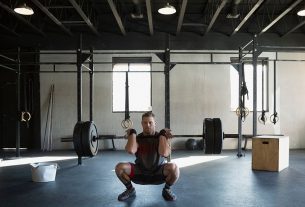If you’re out of shape, don’t listen to those who say you need to wait until you’re “in shape” before starting a resistance workout. And if you are short on time, then you need to organize your workouts in the most efficient way.
If you have 3 hours a week, only use # 1: metabolic resistance training.
This type of workout includes barbell sets, supersets, trisets, circuit workouts, kettlebell combos, etc. You could do one hour or 3 hour workout sessions, or you could do four 45 minute sessions. Once you can do three hours a week of full-body resistance training, start mixing different forms of exercise. At this point, recovery starts to become a problem and intensity deteriorates.
If you have 3-5 hours, use # 1 and # 2: strength training + high interval interval training.
At this point, any additional work is usually done in the form of high-interval training. I want to burn more calories and continue to raise my EPOC. Interval training is like putting your savings in a high-yielding investment account. Low-intensity aerobics is like taking cover under a mattress. Both will work, but the effects you get will be radically different.
If you have 5-6 hours, add # 3: aerobic interval training.
Aerobic interval training will benefit at this point because it is generally still more intense than steady state work, so it burns more calories. There appears to be a benefit for fat oxidation and it will still be easier to recover from the extra anaerobic work.

If you have 6-8 hours, add # 4: Stationary High Intensity Aerobic Training.
If you don’t lose a lot of fat after a six hour workout, I would take a very close look at your diet. If everything is in place, but you just need to increase the fat loss for a special event, then add heavy cardio like a long run or long cycling with a heart rate at 75% of the maximum or higher. Why do this for as long as possible? Well, the goal is to burn as many calories as you can burn without negatively affecting the intensity of your higher priority activities.
If you have even more time, then Addition # 5: Steady-State Low Intensity Activity.
Most of us don’t have more than eight hours of training per week. But if we do this, then any additional activity will help burn calories, which never hurts. Smart guys call this “NEAT” – thermogenesis of unfulfilled activity. I call this more active movement than usual. They work because they allow you to burn a little more calories without making you tired after strength training. Start moving your body, but don’t work so hard that it affects recovery and negatively affects your next workout.
The Fat Loss Paradox
Harder, shorter workouts work better than lighter, longer workouts. Attack your fat with passion and purpose. The best way to do this is through an all-out crash that implements the hierarchy described above. It’s really simple.




